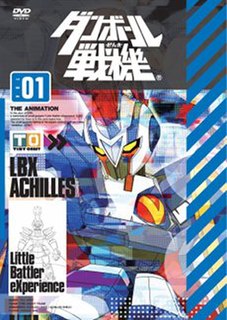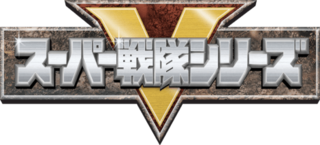 W
WThe Godzilla franchise is a Japanese media franchise created and owned by Toho, centered on the fictional kaiju character Godzilla. It is the longest-running film franchise, having been in ongoing production from 1954, with several hiatuses of varying lengths. The film franchise consists of 36 films; 32 produced by Toho, one produced by TriStar Pictures, and three produced by Legendary Pictures.
 W
WGundam is a Japanese military science fiction media franchise/media mix. Created by Yoshiyuki Tomino and Sunrise, the franchise features giant robots, or mecha, with the name "Gundam". The franchise began on April 7, 1979 with Mobile Suit Gundam, a TV series that defined the "real robot" mecha anime genre by featuring giant robots called mobile suits in a militaristic setting. The popularity of the series and its merchandise spawned a franchise that includes 50 TV series, films and OVAs as well as manga, novels and video games, along with a whole industry of plastic model kits known as Gunpla which makes up 90 percent of the Japanese character plastic-model market.
 W
WKamen Rider , also known as Masked Rider, is a Japanese metaseries / media mix of tokusatsu television programs and films, and manga, created by manga artist Shotaro Ishinomori. The Kamen Rider media generally features a motorcycle-riding superhero with an insect motif who fights supervillains, often known as kaijin .
 W
WLittle Battlers Experience, also called as Danball Senki , or simply LBX, is a series of action role-playing video games created by Level-5, involving small plastic model robots known as LBXs that fight on dioramas made out of cardboard, with the main character setting out to battle against LBXs created by other characters. The first game of the series was released on June 16, 2011 for the PlayStation Portable and has expanded to six official games and three Japanese anime series. Nintendo published the first game for Nintendo 3DS in North America on August 21, 2015, Europe on September 4, 2015 and Australia on September 5, 2015.
 W
WMachine Robo Mugenbine (マシンロボムゲンバイン), also called Multiple General Node Combine System or Mu.Gen.Bine is a Japanese transforming robot toyline first released on 27 December 2003 by Bandai. Designed by PLEX, Mugenbine is the successor of the Machine Robo line of transforming toy robots.
 W
WNaruto is a Japanese manga series written and illustrated by Masashi Kishimoto. It tells the story of Naruto Uzumaki, a young ninja who seeks recognition from his peers and dreams of becoming the Hokage, the leader of his village. The story is told in two parts – the first set in Naruto's pre-teen years, and the second in his teens. The series is based on two one-shot manga by Kishimoto: Karakuri (1995), which earned Kishimoto an honorable mention in Shueisha's monthly Hop Step Award the following year, and Naruto (1997).
 W
WPretty Cure , also known as PreCure and PC, is a Japanese magical girl anime franchise created by Izumi Todo and produced by Asahi Broadcasting Corporation, Asatsu-DK and Toei Animation.
 W
WRock Lords is a spin-off toy line to the GoBots from Tonka in 1986 after the movie GoBots: Battle of the Rock Lords. They are transforming rocks that came with weapons such as axes, guns and swords. There were vehicles for the Rock Lords to drive in battle. The Rock Lords were imported from Bandai's Machine Robo "Ganseki Chōjin" sub-line. Like other transforming toys, there were "good guys" and "bad guys". The tagline associated with these toys was "Powerful living rocks!".
 W
WSpacewarp is a line of build-it-yourself, marble-run toy "roller coasters" first made in the 1980s by Bandai. Users cut lengths of track to the correct size from a single roll of thick plastic tubing, forming curves and loops held in place by plastic track rail holders which attach to metal rods held vertical in a black plastic base. Steel balls roll around the track and on to a battery-powered screw conveyor that takes them to the top to start all over again.
 W
WSpiral Zone is a 1987 American science-fiction animated series produced by Atlantic/Kushner-Locke. Spiral Zone was animated by Japanese studio Visual 80 as well as South Korean studio AKOM. Based in part from a toy line made by Japanese company Bandai, the series focused on an international group of soldiers fighting to free the world from a scientist who controls much of the Earth's surface. It only ran for one season, with a total count of 65 episodes.
 W
WSuper Sentai is a Japanese superhero team metaseries and media franchise consisting of television series and films produced by Toei Company, and Bandai, and aired by TV Asahi. The shows are of the tokusatsu genre, featuring live action characters and colorful special effects, and are aimed at children. Super Sentai airs alongside the Kamen Rider series in the Super Hero Time programming block on Sunday mornings. In North America, the Super Sentai series is best known as the source material for the Power Rangers series.
 W
WUltraman, more commonly known as the Ultra Series , is the collective name for all media produced by Tsuburaya Productions featuring Ultraman, his many brethren, and the myriad Ultra Monsters. Debuting with Ultra Q and then Ultraman in 1966, the Ultra Series is one of the most prominent tokusatsu superhero genre productions from Japan, along with the Toei-produced series Kamen Rider, Super Sentai and the Metal Heroes. The Ultra Series is also one of the most well-known examples of the daikaiju genre, along with Toho's Godzilla series and Daiei Film's Gamera series. However, the Ultra Series also falls into the kyodai hīro subgenre of tokusatsu TV shows.